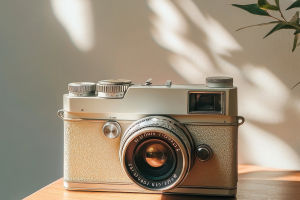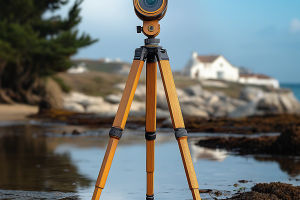When you're capturing life—whether it's a bustling street, a quiet landmark, or your friend laughing under golden light—you want the photo to pop. But nothing spoils a great shot like missed focus.
If you've ever come home with images that looked great on the camera screen but turned out soft or fuzzy, you're not alone.
This guide is all about helping you get crisp, clear images—no matter where your adventures take you. With just a few thoughtful changes to how you shoot, you can bring out the clarity that makes your travel, cultural, and everyday photos shine.
Camera Settings That Make a Difference
Let's start with the nuts and bolts. Even the best camera won't help much if your settings are off. But don't worry—just a few adjustments can sharpen your photos instantly.
Choose the Right Focus Mode
Your camera has different focus modes for a reason. If your subject is still—like a building or food dish—use Single Shot (often called AF-S or One Shot). For moving subjects—like dancers, kids, or street action—switch to Continuous (AF-C or AI Servo). This keeps the focus tracking as things move.
If your camera offers eye detection, give it a try—it's surprisingly smart for portraits or candid moments.
Use a Smaller Aperture for Group Shots
When you want multiple faces or layers in focus, go for a narrower aperture like f/5.6 or f/8. This increases your depth of field so more of the scene stays sharp. It's perfect for gatherings, family photos, or landscape scenes with lots of details.
But be careful not to go too narrow (like f/22), especially in low light—your image might lose some sharpness due to something called diffraction.
Watch That Shutter Speed
A slow shutter speed is a common reason for blur—especially if you're shooting handheld. A good rule? Keep your shutter speed at least as fast as the focal length of your lens. So, for a 50mm lens, try 1/50 or faster. If your subject is moving, go even faster—1/250 or above, depending on the action.
You can also raise your ISO a bit to keep the shutter speed high in dim light.
Simple Habits That Keep Things Clear
Getting sharp photos isn't just about numbers—it's also about how you hold, move, and focus in real-world moments. These habits are easy to build and make a big difference every time you shoot.
Steady Your Hands (or Use a Surface)
Even the tiniest movement can blur your photo if your settings aren't fast enough. Practice holding your camera with both hands, keeping your elbows close to your body. If you're using a phone, rest it against something stable or use both thumbs for balance.
No tripod? No problem. Set your camera on a bench, wall, or even a backpack. Use the self-timer or a remote to avoid shaking it when you press the button.
Focus on the Right Spot
If your camera chooses focus automatically, it might pick the wrong spot. Instead, switch to single-point focus and aim at the part you want sharp—usually the eyes for portraits, or a specific subject in the scene.
And don't rush. Take a moment to lock focus before snapping the shot. If you're in a fast-paced situation, burst mode can help you catch that one perfect frame.
Clean Lens, Clear Photo
It sounds simple, but a smudge or fingerprint on your lens can make a photo look hazy or soft. Before you shoot, give your lens a quick check and wipe it gently with a microfiber cloth. Especially when traveling, your gear goes through a lot—treat it kindly, and your images will thank you.
Achieving sharp focus isn't about luck—it's about intention. With a few small shifts in how you shoot, you can consistently create photos that are crisp, powerful, and full of life.
So whether you're chasing city lights, exploring cultural festivals, or just capturing a quiet afternoon, remember to slow down, steady your hands, and trust your eye. The details are already there—your job is to bring them into focus.


